Eskrimadors is a Philippin film of genre Martial arts
Eskrimadors (2010)

If you like this film, let us know!
Eskrimadors is a 2010 Philippine documentary film about the Filipino martial arts eskrima, written and directed by Kerwin Go, a Los Angeles trained cinematographer.
Synopsis
The film documents the development of the martial arts of eskrima, tracing its origins from the tribal warfares of the Philippines to its practice among international martial artists. It include interviews with grandmasters Ciriaco “Cacoy” Canete, Dionisio Canete, and Undo Caburnay, and participation of groups such as Doce Pares, Lapunti Arnis de Abanico, Teovel’s Balintawak, Nickelstick Balintawak, and Liborio Heyrosa Decuerdas, in reenactments.Comments
Leave comment :
Suggestions of similar film to Eskrimadors
There are 9779 with the same cinematographic genres (including 9 with exactly the same 3 genres than Eskrimadors), 4182 films with the same themes (including 35 films with the same 3 themes than Eskrimadors), to have finally 70 suggestions of similar films.If you liked Eskrimadors, you will probably like those similar films :
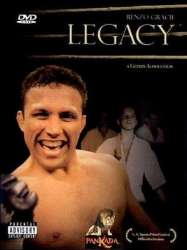
Renzo Gracie: Legacy (2008)
, 1h18Origin USA
Genres Martial arts, Documentary, Martial arts
Themes Sports films, Martial arts films, Documentary films about sports, Documentaire sur une personnalité
Rating78%





 , 1h30
, 1h30Origin USA
Genres Martial arts, Documentary, Martial arts
Themes Sports films, Martial arts films, Documentary films about sports
Actors Gary Busey, Mel Gibson, Chuck Norris
Rating72%





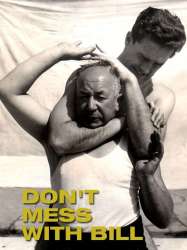
Don't Mess with Bill (1980)
Directed by Pen Densham
Origin USA
Genres Martial arts, Documentary, Martial arts
Themes Sports films, Martial arts films, Documentaire sur une personnalité
Rating63%





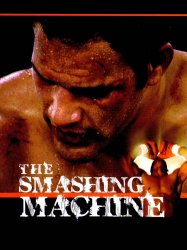
The Smashing Machine (2002)
, 1h18Directed by John Hyams
Origin USA
Genres Documentary, Martial arts
Themes Sports films, Martial arts films, Documentary films about sports
Rating76%





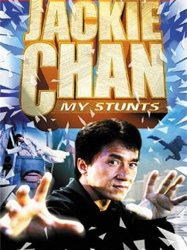
Jackie Chan: My Stunts (1999)
, 1h34Directed by Jackie Chan
Origin Hong kong
Genres Martial arts, Documentary, Martial arts
Themes Films about music and musicians, Sports films, Films about television, Martial arts films, Documentary films about business, Documentary films about the film industry, Documentary films about music and musicians, Documentaire sur une personnalité, Musical films, Kung fu films
Actors Jackie Chan, Jackie Chan Stunt Team, Ken Lo, Yuen Biao, Brad Allan, Mars
Rating75%





Jackie Chan : My Stunts est un film documentaire hongkongais réalisé par Jackie Chan, sorti en 1999. Ce documentaire nous montre Jackie Chan et son équipe de cascadeurs expliquant ce qu'ils font dans les films lors des grandes cascades.

The Real Shaolin (2008)
, 1h29Genres Martial arts, Documentary, Martial arts
Themes Sports films, Martial arts films
Rating80%





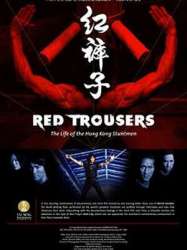 , 1h36
, 1h36Directed by Robin Shou
Genres Martial arts, Documentary, Martial arts
Themes Sports films, Martial arts films, Documentary films about business, Documentary films about the film industry
Actors Robin Shou, Keith Cooke, Sammo Hung, Liu Chia-liang
Rating66%





This documentary from Robin Shou—who also hosts and participates in the film—takes a behind-the-scenes glance inside the stunt industry of Hong Kong, which is known for being riskier and less trick-oriented than its American counterpart. In addition to archival and interview footage featuring some of the industry's most prominent stuntmen, Red Trousers - The Life of Hong Kong Stuntmen incorporates scenes from Lost Time (2001) in an effort to illustrate how stuntmen prepare for and ultimately perform in modern martial arts films.
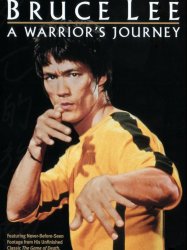 , 1h50
, 1h50Directed by Bruce Lee
Origin USA
Genres Martial arts, Documentary, Action, Martial arts
Themes Sports films, Films about television, Martial arts films, Documentary films about business, Documentary films about the film industry, Documentaire sur une personnalité
Actors Bruce Lee, Jackie Chan, Kareem Abdul-Jabbar, George Lazenby, Sammo Hung, Robert Baker
Rating79%





Bruce Lee, légendaire artiste martial, est le sujet central de ce documentaire de Lee John Little (lui -même fan de Bruce Lee). Au travers d'interviews, de scènes d'action et de prises de vues en coulisses tirées du dernier film inachevé de Bruce Lee, le Jeu de la Mort, Little nous dépeint un portrait détaillé de l'acteur de films d'action le plus renommé du monde.
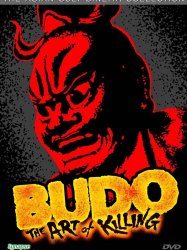
Budo: The Art of Killing (1978)
, 1h30Genres Martial arts, Documentary, Martial arts
Themes Sports films, Martial arts films
Rating68%





Budo: The Art of Killing is a compilation of various gendai budō each demonstrated by famous Japanese martial artists from the late 1970s. The film treats its subject matter with deep respect and demonstrates a great reverence for both Budō and Japanese culture in general. The film begins with Hayashi Kunishiro reenacting seppuku, the ritualistic form of suicide practiced by Japanese samurai during Feudal Japan. This is followed by a demonstration of yabusame and footage of a samurai cavalry battle. The narrator then explains the connection between Budō and its universal symbol—the nihonto. After a demonstration of the effectiveness of the Japanese sword, the audience is shown the techniques developed by Okinawan farmers to combat the sword. Karate-do master Teruo Hayashi then demonstrates Okinawan weapon techniques. The film moves along with further footage of karate-do including makiwara training by Fujimoto (including the infamous shot of him striking a locomotive and chopping a beer bottle) and a demonstration of the nunchaku by Satoru Suzuki, a weapon made famous by Bruce Lee. The film moves to footage of traditional Judo training such as mat rolls, pole-hopping, bunny-hops, and practice of hip throws using rubber bands tied around trees. The film moves on to discuss naginata-do, a budō popular with female martial art practitioners in Japan. Aikido is then demonstrated by Gozo Shioda, the founder of Yoshinkan aikido interspersed with shots of leaves falling into a brook. To emphasize the film's theme of "mind and body are one in Budo" the viewer is shown Shinto practitioners fire walking. The film then shows training in a sumo stable with rikishi Takamiyama, where the training shown is both tough and cruel. Scenes of young people practicing kobudo on the beach follow the sumo demonstration as the narrator discusses the succession of Budō to younger generations. The film explains the importance of kata with Teruo Hayashi demonstrating more karate-do kumite. The narrator explains, "... karate training can be both severe and cruel, yet a sword can take away a life with one swing." The film shifts its focus to sword arts with demonstrations of iaido, tameshigiri and kendo by Shuji Matsushita and Tomoo Koide as the narrator discusses the fear instilled by the Japanese sword. The "limitless" connection between Zen Buddhism and Budō is discussed with Shuji Matsushita on the receiving end of a strike from an abbot's kyosaku while in zazen. This is followed by a highlight of the film in which Taizaburo Nakamura demonstrating various sword cuts including a shot filmed in slo-motion showing the shocking speed in which a Japanese sword can behead a man (1/100 of a second). Continuing with a focus on the sword, the film shows the art of traditional nihonto forging by swordsmith Amada Akitsugu, considered a national living treasure in Japan. Budo: The Art of Killing concludes with scenes of Noh as the narrator explains, "As long as the universal truths of heaven, the earth and man remain, the spirit of Budo shall endure.

Iron and Silk (1991)
, 1h41Origin USA
Genres Drama, Martial arts, Comedy, Documentary, Action, Romance, Martial arts
Themes Sports films, Martial arts films
Actors Vivian Wu
Rating68%





Mark Salzman always was interested in Kung-Fu and the Chinese culture, claims to have seen every Kung-Fu movie. 1982, with a degree in Chinese literature, he visits a Hunan province Medical university in China for two years to teach Chinese teachers the English language. He learns the refinements of correct behavior among Chinese people, makes friends with his pupils, falls in love with the young doctor Ming, learns Chinese Martial Art, WuShu (similar Kung-Fu) from the famous teacher Pan... but also learns about political repression, especially when he's forbidden contact with some of his friends.
 Connection
Connection